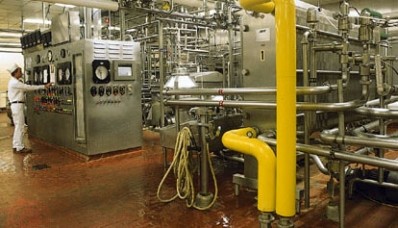Packaged food holds potential for those who dare

According to a report by business consultants Bain, and the Federation of Indian Chambers of Commerce (Ficci), to succeed in this sector, participants must plan and act smartly while bearing in mind the existence of multiple stakeholders.
Macro growth impacts on industry
“Indian economic growth is powering great shifts in our lifestyle,” said Nikhil Ojha, a partner at Bain and co-author of the study, Processed Food in India: Enablers and Barriers.
“What we eat and when, how we shop and how we share food are all changing at a fast rate. The packaged food market has witnessed strong annual growth for several years now, and this growth trend is likely to further accelerate in the light of ongoing shifts in the demographic, economic, cultural, regulatory and competitor landscape.”
The packaged food industry relies on a complex web of relationships, with each player in the web liable to benefit from the industry’s expansion. As a result, the report maintains, each one has a responsibility to play a part in promoting this rise.
Fortune favours the brave
“The sector as we see it is at an exciting point of inflection, with accelerated growth beckoning around the corner. How sharp that inflection point will be depends, to some extent, on developments within the policy and macro-economic context. But for companies which understand this context, and are prepared—and able—to seize the opportunities presented by India's new markets, the prospects are bright.”
Based on extensive secondary and primary research, the findings suggest that the prizes available for those who dare to invest will continue to grow in scope. “In fact, our bottom-up estimates of growth for each sub-category within the market, in the context of ongoing trends and international examples, suggest that India's packaged foods market could well exceed current growth expectations,” the report said.
This, it continues, means significant opportunities for companies who serve the Indian consumer, for the agricultural sector, for a number ancillary sectors and for investors.
“Moreover, it is an opportunity with the potential to impact positively on employment, economic growth and quality of life in India. However, for us to realise the full opportunity, we must first clearly identify the biggest enablers that will drive success and the barriers most likely to hinder it. Our task then is to develop and execute action plans that will optimise the first while mitigating the second.”
Driving forces
The report identifies four key factors that will drive the development of the packaged foods industry over the next two decades.
The first is India’s status as a world hub for food production and processing. “The costs of processing and packaging food can be up to 40% lower than it is in parts of Europe, which, combined with India's resources of skilled labour, make it an attractive venue for investment,” the report said.
The second driver will stem from demographic change, with around 245m young adults entering the workforce over the next 20 years, and a 6.1% increase in disposable income over the same time period. With one-third of all Indians living in urban areas by 2020, this is good news for the market, for which 78% of demand comes from cities and towns.
Growing foreign investment fuels the third driver by increasing competition and providing greater variety for consumers. The past few years have seen increases in investment, through joint-ventures, foreign institutional investment and private equity.
Between 2008 and 2011, PE investment in the food and agriculture sector totalled Rs3,400 crore, while the government has set a target of Rs1,04,000 crore for investment in food-related infrastructure from the private sector.
Finally, favourable government policy presents the fourth key driver for the industry. “Importantly the government recognises the importance of the food production and processing industry and is facilitating expansion,” wrote the authors, adding that 100% FDI in retail will greatly transform the processed food industry.
Further incentives such as high tax rebates, depreciation benefits and reduced custom and excise charges also encourage companies into food processing. Targeted policies like food parks have been designed to address weaknesses throughout the value chain, and by 2017, 50 food parks are expected to have been built across the country, providing accessible transport and processing facilities to even small farmers.
On the other side of the coin, the “Big Three” hitches that put pressure across most of Indian business are just as apparent in processed food. Lack of infrastructure and supply chain, difficulties in conducting business and low profitability each present a significant barrier to the industry, as they do elsewhere.










